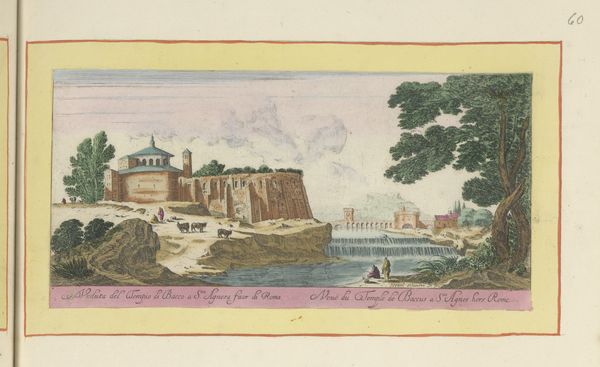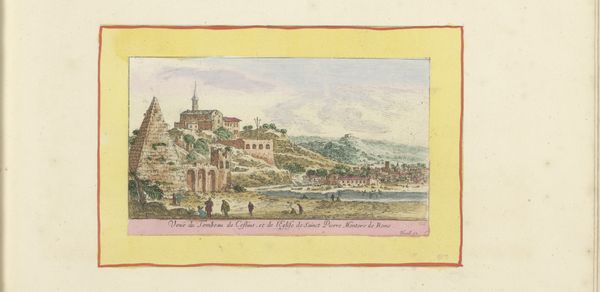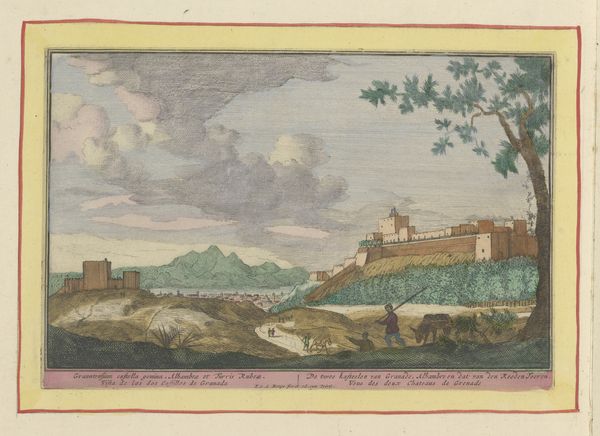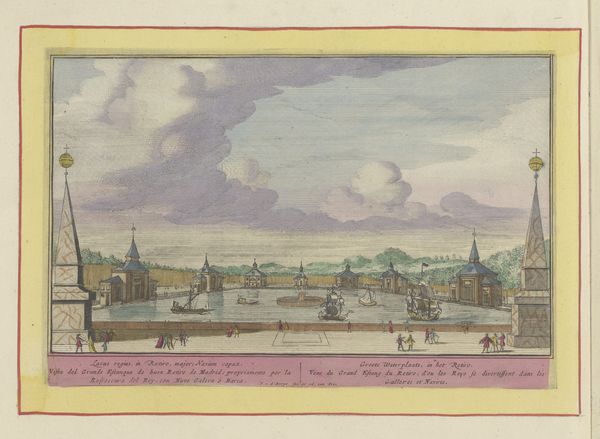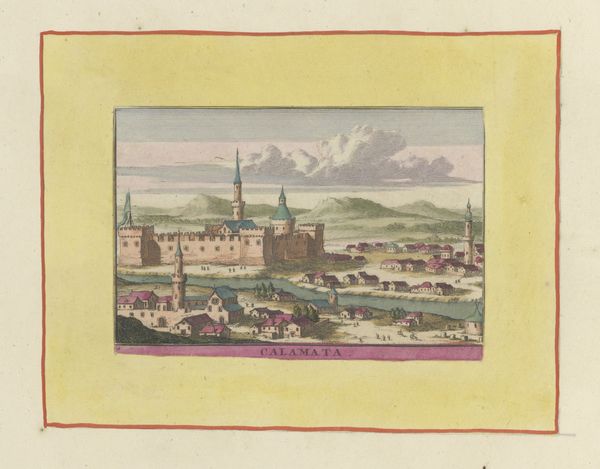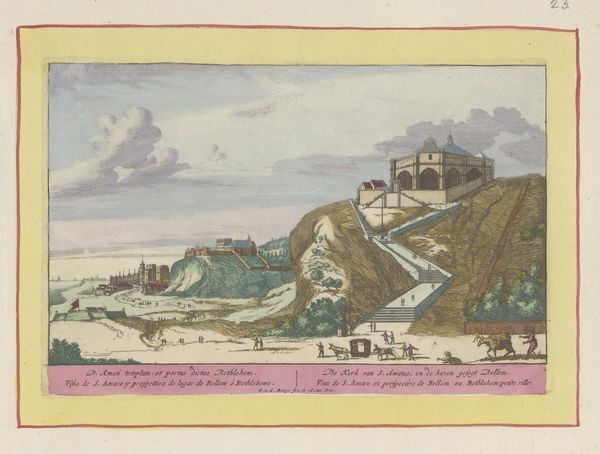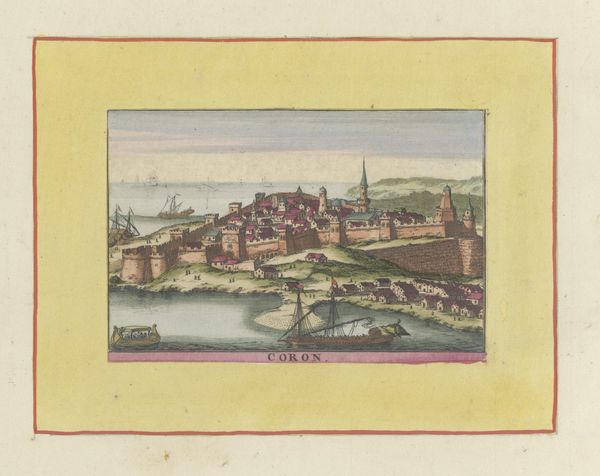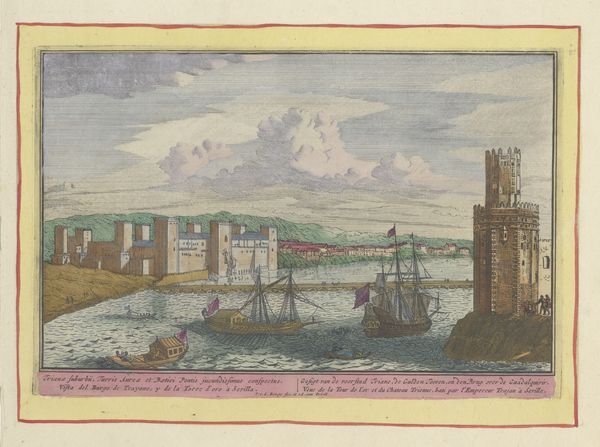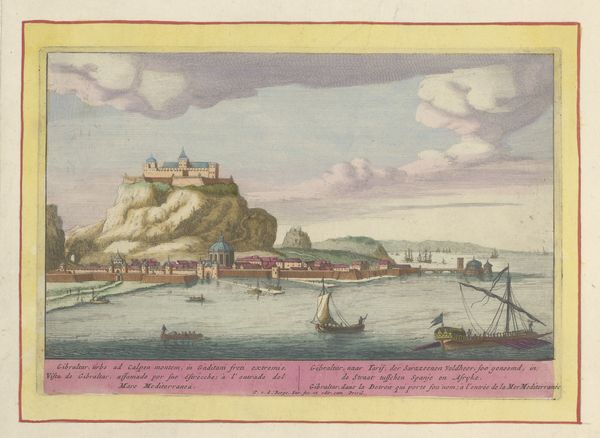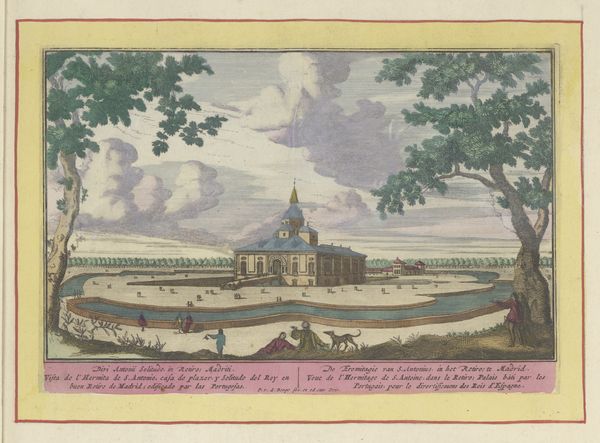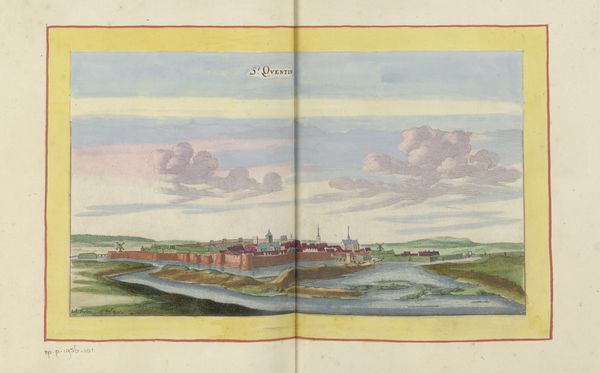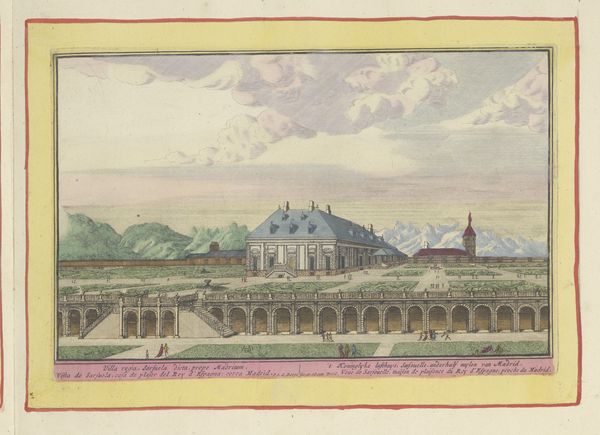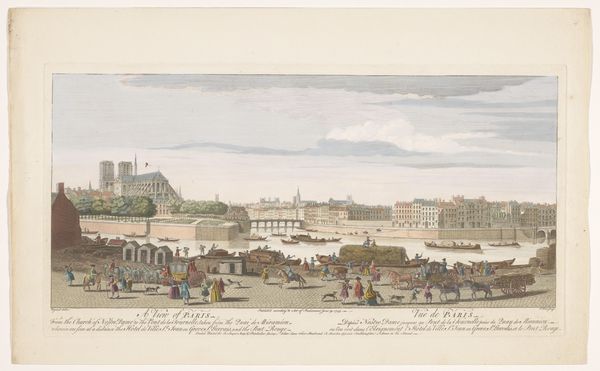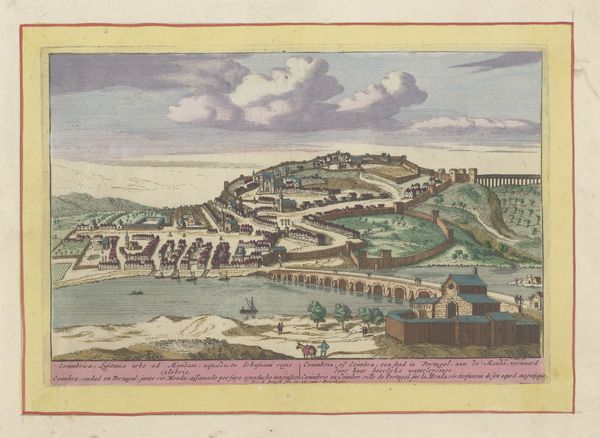
print, etching, engraving
#
baroque
# print
#
etching
#
landscape
#
cityscape
#
engraving
Dimensions: height 118 mm, width 203 mm
Copyright: Rijks Museum: Open Domain
Curator: It's quite delicate, isn’t it? This colored etching and engraving gives off a rather tranquil atmosphere. Editor: Agreed. Let’s explore this print titled "Engelenburcht en Engelenbrug te Rome" – likely crafted sometime between 1631 and 1717 by Israel Silvestre. Immediately striking is the layered process behind the print itself: etching providing the initial composition with engraving lending it fine details. Silvestre was evidently committed to process. Curator: I see that, and I find it so interesting that Silvestre chose to depict Rome using such traditional printmaking methods. Prints democratized images, and it highlights the shifting power structures within artistic production and reception, and speaks to Rome’s cultural capital circulating among different classes of consumers. Editor: Absolutely. Also, consider the symbolism—this print freezes in time the relics of power like the Castel Sant'Angelo. Originally Hadrian's mausoleum, its transformation over centuries to papal fortress speaks to contested power and shifting social dynamics, particularly with the papacy wielding so much influence. The bridge too, stands as a symbol of connection. Curator: Exactly. And I’d love to know about the economic factors influencing Silvestre’s artistic practice. I can see he took care in delineating the perspective in the artwork, and that shows technical facility. What resources and tools did Silvestre need to create it? Where was the paper sourced, how were the inks mixed, and what was the societal role of printmakers in 17th-century Europe? Editor: Well, prints had many roles. They served as records but also propaganda pieces, celebrating advancements and disseminating specific ideologies. In relation, I see reflections of class tensions in his presentation, though ever-so-slight and carefully managed. These aren't grand statements of upheaval but instead carefully rendered realities of daily interactions. Curator: To finish our commentary, what I enjoy most is imagining the material reality. Israel Silvestre handled all of these materials with skillful hands. Editor: And I appreciate the window this artwork gives us into a specific period, offering an understated yet rich perspective into the layers of societal structures during the Baroque era.
Comments
No comments
Be the first to comment and join the conversation on the ultimate creative platform.
